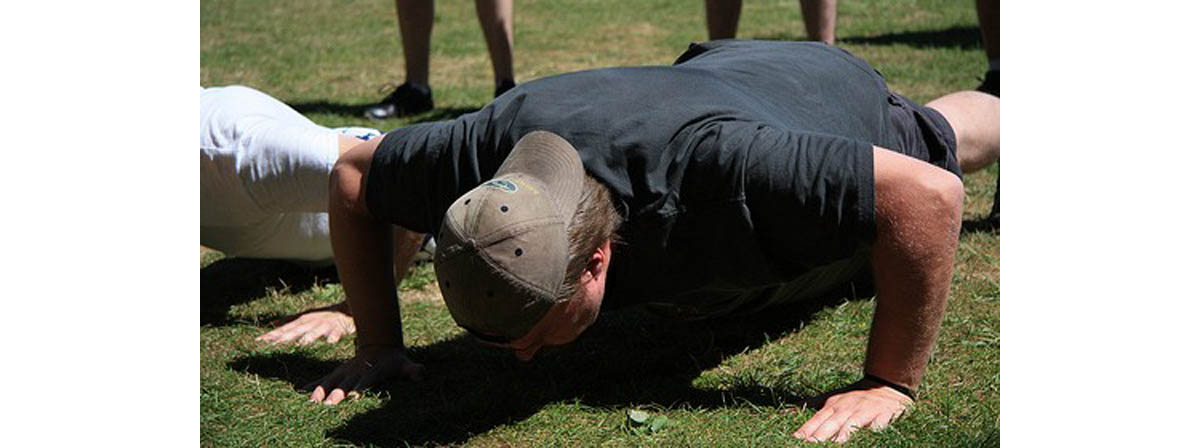Table of Contents
The cons of partial range push-ups pretty much take care of the pros of the full range version of the exercise.
Your tris, shoulders and core don’t get worked with partials – switch to full range and problem solved.

Secondly, if you ever half to complete a push-up test, half reps won’t cut it. The military, fire service, sports teams and many other organizations use a push-up test as a way of assessing upper body strength and endurance. Usually the way they’ll ensure you’re not cheating is to have a partner check your push-up depth.
For this, the partner will place the palm of one hand flat on the floor underneath your chest and the other hand on top, clenched into a fist. Your chest needs to hit the top of their fist on every rep.
No touch? No rep.
What about the negatives of full range push-ups?
There aren't too many. That’s providing you can complete them properly that is.
If, however, you’re struggling with push-ups, full range ones can be more risky with partials. The main place you’ll see people struggling is toward the bottom of the movement, with that dreaded hip sag.
You know the style. You've probably seen it in your gym – as said person descends from the top position, their technique can seem fairly solid. Yet as soon as they get halfway down, their butt and hips drop toward the floor as their core loses stability and their arms, chest and shoulders can’t support them. The poor person wants to complete the push-up so badly that they let their hips hit the floor, convincing themselves that they've made it all the way down, then perform some sort of horrid reverse hump to get themselves back up.
If this is you, stick to partial push-ups or inclines until you’re ready to perform perfect full range push-ups.
Increased Range of Motion Push-ups
Increasing the range of motion past a full range can also be hugely beneficial, provided you’re already competent on regular full range ones.
Grab yourself a pair of dumbbells (or better still a pair of kettlebells, as the handles are higher.) Place a hand on each, then perform your push-ups. Where your hands are elevated, you’ll be able to get much lower and increase your range of motion. These are awesome for increasing chest muscle activation and building big pecs.
Another good variation is to put your feet on a weight bench or chair and perform your push-ups like that. Or, throw caution to the wind and combine both variations for the ultimate hardcore range of motion push-up.
In summary, pick whichever range of motion push-up you can perform safely, but that still challenges you.
- “The Best Damn Push-Ups Article, Period!” by Bret Contreras and Elsbeth Vaino
- Published June 22nd 2011
- Accessed on August 24th 2013
- Retrieved from http://www.t-nation.com/readArticle.do?id=4618348
- Photo courtesy of Positively Fit by Flickr : www.flickr.com/photos/positivelyfit/4413885524/
- Photo courtesy of firesika by Flickr : www.flickr.com/photos/firesika/8129622621/


Your thoughts on this